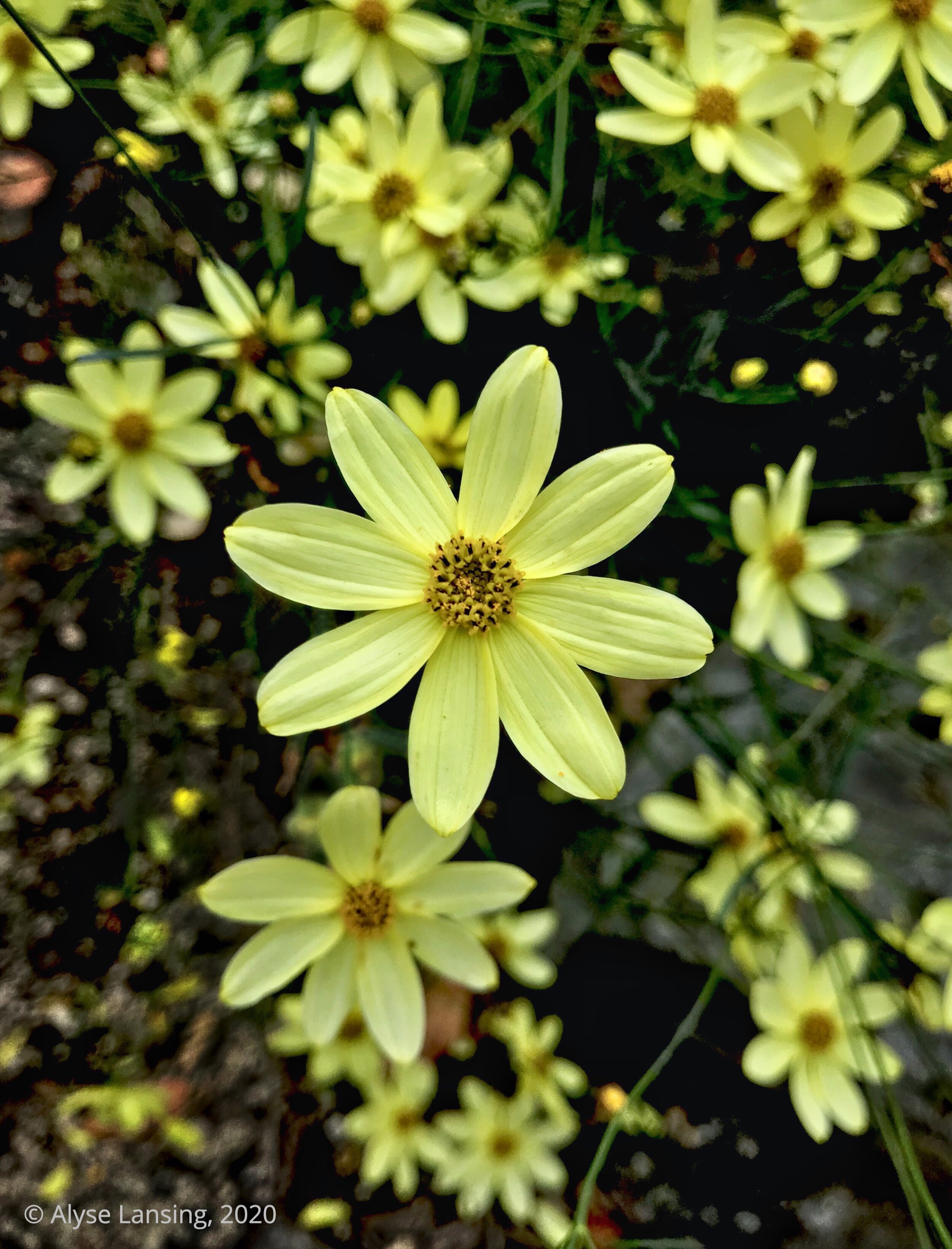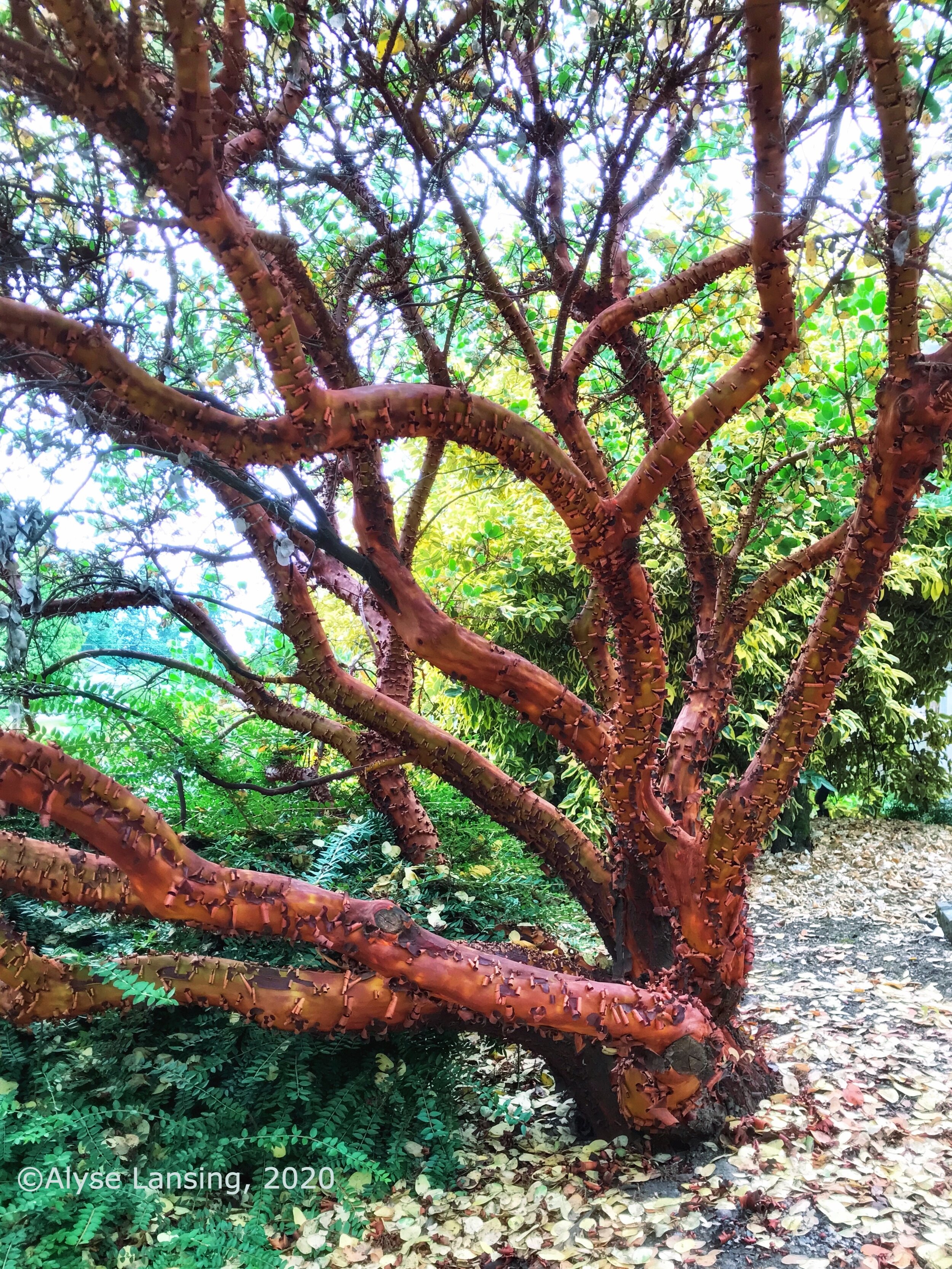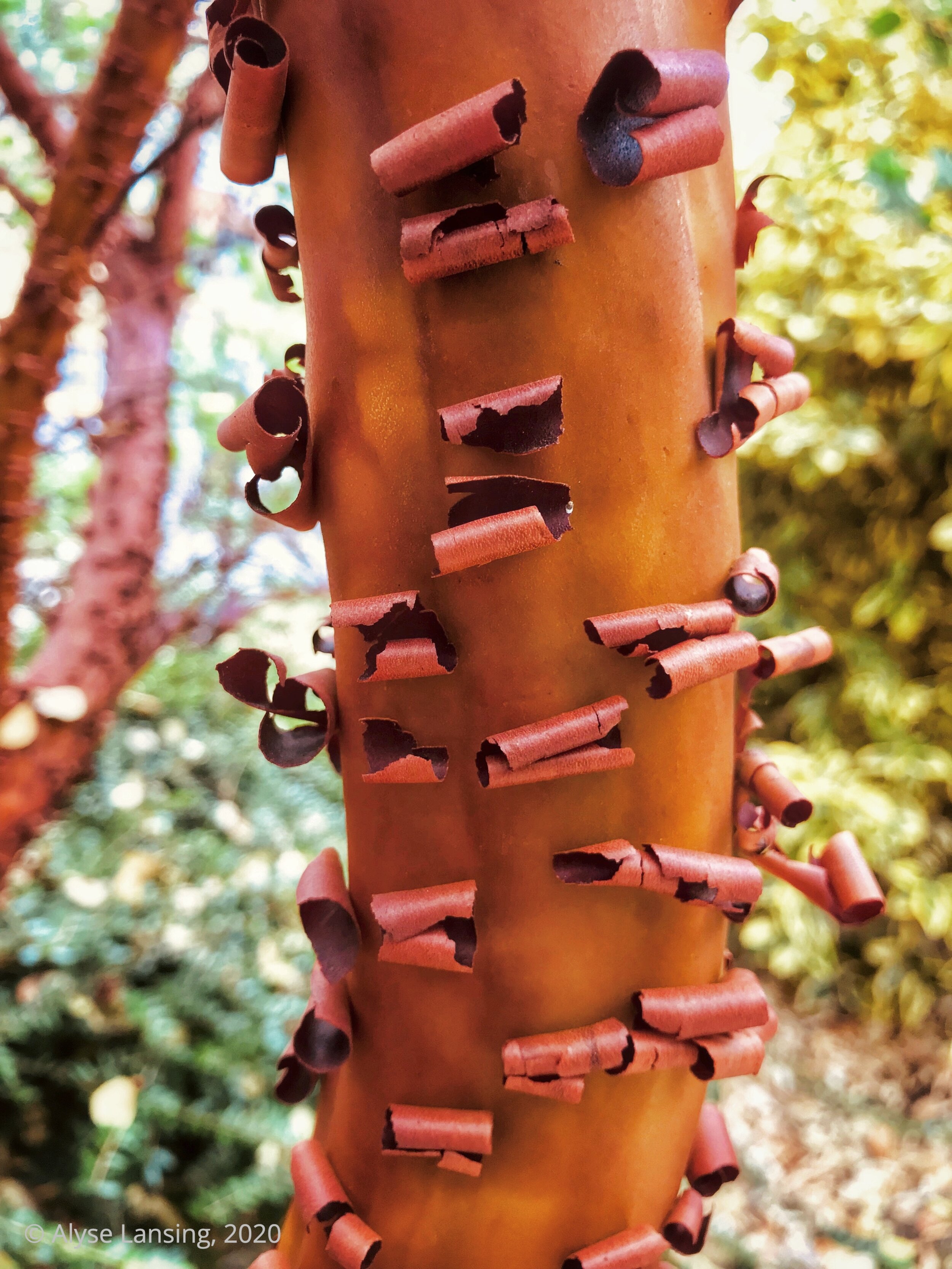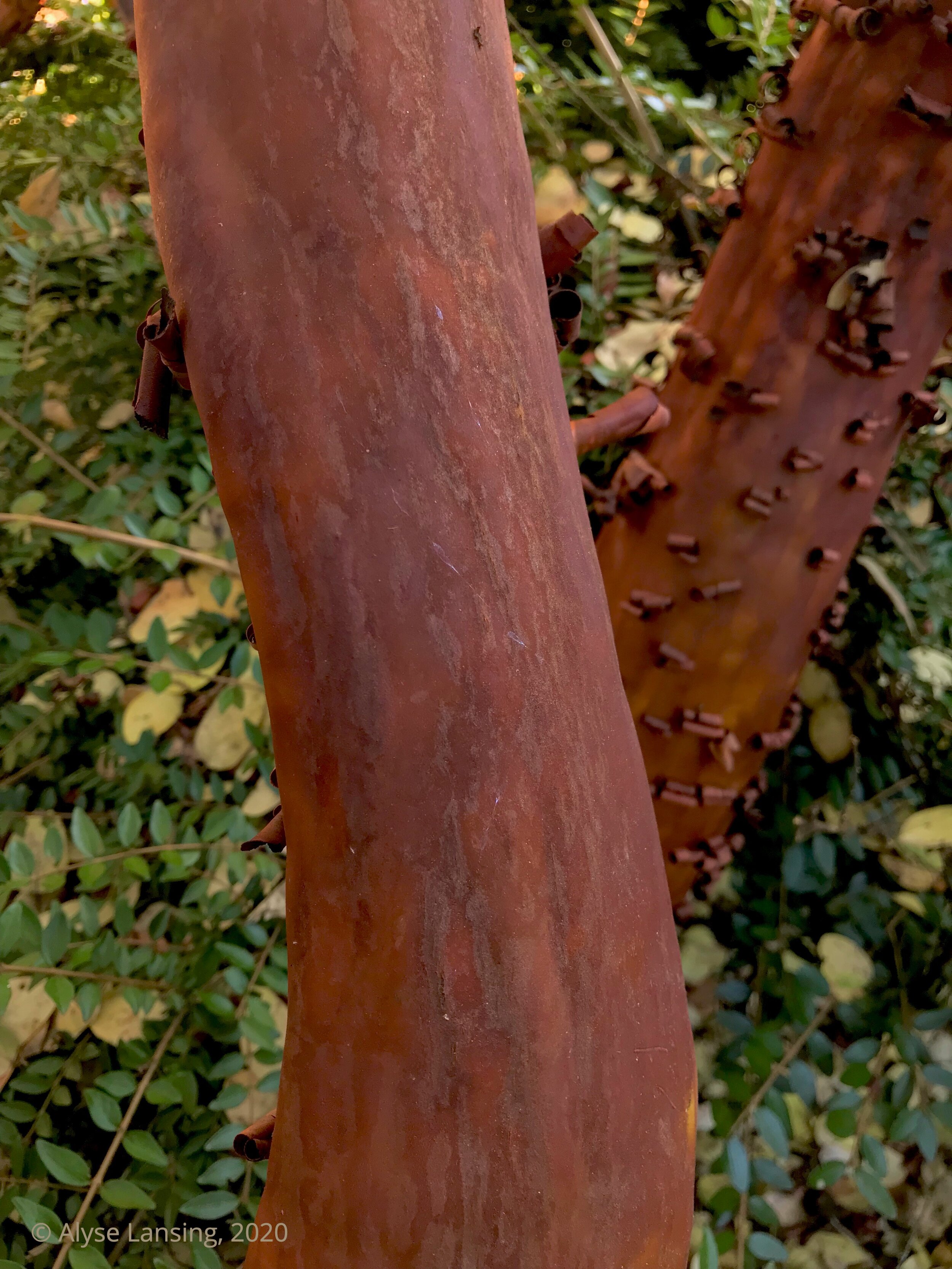What the red bark of Manzanita does in summer
/Rhythmic patterns of peeling bark - Arctostaphylos ‘Dr Hurd’
Our yard, SE Quad
If it was not for this blog, I would have missed this shot. What a joy! For me, photographing a garden and creating it are almost too integrated to separate.
I was sitting outside, working on my laptop, when I looked up and spied this view of my Arctostaphylos ‘Dr Hurd,’ glowing from across the yard. It was framed sweetly between the trees, the new retaining walls, and even the new fence. I had planned this framing to some extent (these are the new gravel patios installed last year), but still it surprised me. Clearly, I have not spent enough time sitting on this patio!
Foreground plants frame the scene: a Japanese Maple tree (top), an Arnold Promise Witch Hazel (center left); and ground covers of Bamboo Iris (Iris confusa) and Helleborus.
The Manzanita’s glow pulled my eye into the scene like a single-point perspective drawing.
So of course I had to get up and take a picture. It’s a “If you give a mouse a cookie” thing with me, and I was off having a moment with the tree.
Because I was now paying attention, I noticed the Coreopsis ‘Moonbeam,’ planted here last fall, and how well it went with the Manzanita’s red bark.
Coreopsis ‘Moonbeam’
This shouldn’t have surprised me, as the pale yellow flowers of ‘Moonbeam’ seem to go well with everything. (Good trait in a plant that’s also easy to grow.)
Manzanita’s peeling bark is due to stem growth that starts in spring each year - botanically explained here by this article in Bay Nature magazine, and in this essay/photo essay by one of my favorite photographers, Saxon Holt.
The old bark cracks into sections as the trunk expands. This ability to shed is part of the plant’s defense against insects and disease. When each year’s skin is shed, insects and disease are shed along with it. As opposed to the skin/defense of thicker, rougher bark, as most other plants have, Manzanitas are able to have the thin, sleek, smooth bark they are famous for.
I was attracted to the cool patterns of these gradually exfoliating bark curls, marching up the trunks.
I’m in love with these curls!
Arctostaphylos peeling bark curls
You can run your hands up and down the trunks and rub off the bark pieces relatively easily, especially late in the summer. It’s as tempting—and satisfying—as rubbing the touchable mahogany of winter.
Under the year-old bark is a virgin layer that’s still greenish or yellowish, not yet hardened by the sun.
As the bark pieces dry and eventually drop, they leave a spot of the unexposed coloration underneath. Gradually these spots will darken with exposure, but until then, the dropped curls leave behind patterns that match where they last clung.
The temporary checkerboard patterns will fade within a month or so, but they’re brightest in the first few days.
If it were not for my desire to capture this glowing bark on my camera, I would have missed all of this glamorousness! For me, my observation tool is a camera, for others it may be a sketch pad, or a hand lens—whatever brings you close to the details, and helps you slow, to SEE what is right there in front of you.
The natural world again, reminding me. Take the time to see.
The last photo shows the red-orange bark that remains in late summer after the old bark has sloughed. The color will deepen into mahogany by winter.
How to grow
Arctostaphylos can be tricky to grow in the garden. They grow well in my sloped garden with lots of sun and NO irrigation, once established. They are deer tolerant once established as well. They are not great with clay soils. They like air circulation. I’ve learned the hard way that organic mulches are NOT appreciated. Gravel mulches do much better here in NW Oregon, as they help the one thing most dangerous to them: too much moisture in the root zone.
Xera Plants’ website is an excellent resource for manzanitas for Pacific NW gardens.
I’ve posted about this Dr Hurd before, here, when we cleared out the neighboring plants, giving him all the room he wanted. His day in the sun is the last part of that blog post from 2016.
Thanks for taking a breath of Manzanita with me!
Please feel free to comment below. I’d love to hear from you.



















